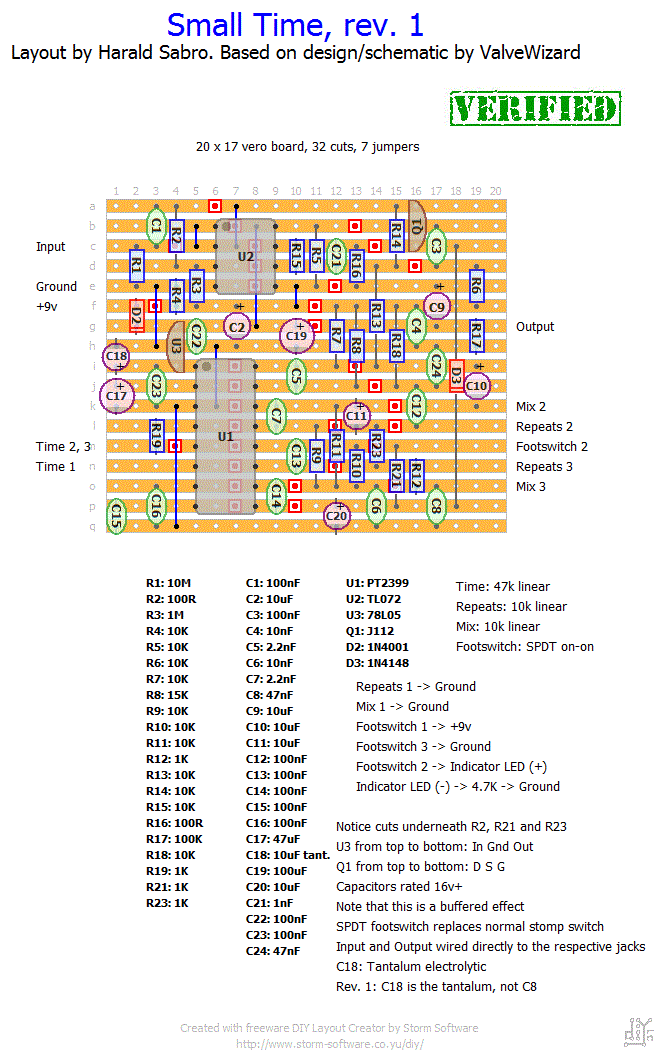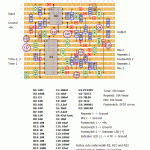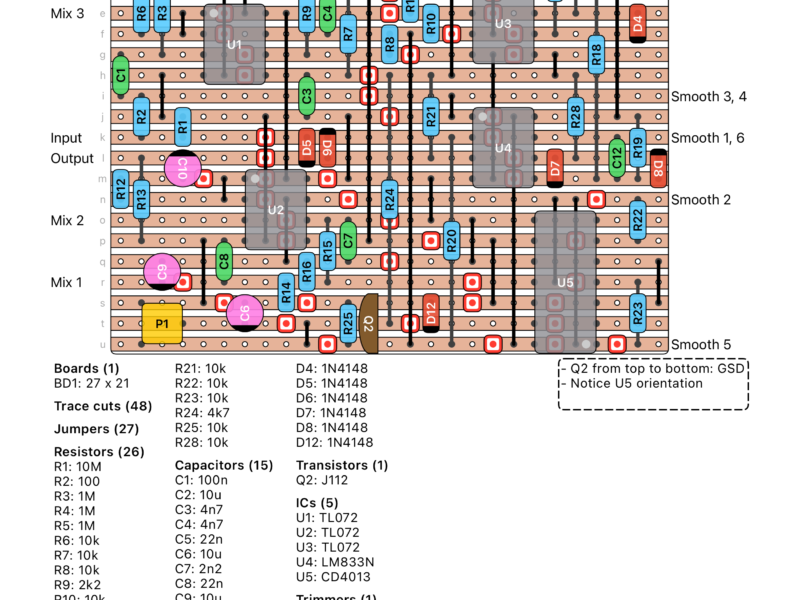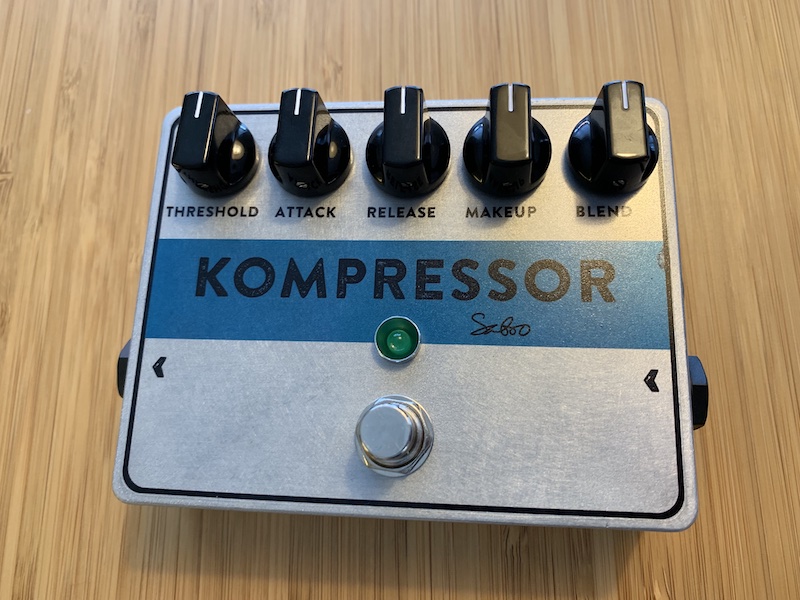Here’s a vero layout for the Small Time, a buffered PT2399 delay with tails that should fit in a 1590B without much trouble. Do note the non-standard stomp switch arrangement (this one requires only an SPDT).
Update (09.06.2012): Thanks to Earplane for verifying the layout!
Update (23.6.2012): Found a small mistake on the layout as I was sourcing parts for my own build. C18 is supposed to be the tantalum electrolytic, not C8. Layout corrected. Sorry for that.




I am sure this piece of writing has touched all the
internet viewers, its really really pleasant piece of writing on building up new webpage.
It is appropriate time to make some plans for the future and it’s time to be happy.
I’ve read this post and if I could I desire
to suggest you few interesting things or suggestions.
Maybe you could write next articles referring to this article.
I wish to read even more things about it!
I’m not sure why but this weblog is loading very slow for me.
Is anyone else having this problem or is it a issue on my end?
I’ll check back later and see if the problem still exists.
What’s up to every one, for the reason that I am in fact eager of reading this website’s post
to be updated on a regular basis. It includes good
material.
Thanks for another magnificent article. Where else may just anyone get that type
of information in such a perfect means of writing?
I have a presentation subsequent week, and I am on the look for such information.
Wow, fantastic weblog layout! How long have you been running a blog for?
you made running a blog look easy. The full look of your site is great,
as smartly as the content material!
Greetings! Very helpful advice within this post! It’s the
little changes that will make the most significant changes.
Thanks a lot for sharing!
It is not my first time to pay a visit this web site, i am visiting this web site dailly and take pleasant facts from here every
day.
I think the admin of this website is actually working hard for his
website, because here every information is quality based stuff.
Cave Dweller you say? I’ll have a look at it. Appreciate the feedback.
Hi Harald just wanted to say thank you for this layout, worked great for me!
The delay is somewhat boring sounding, for the number of parts I’d say go with the Cave Dweller by madbean any day over this. But still it will be a nice addition to a 3-in-1 I’m making and I DO love the tails hehe.
Thank you man.
I recall getting a little confused while getting the switching to work. From memory, it won’t ‘close’ simply by removing +9V and you have to ground ‘Footswitch 2’ too. Your layout says as much, but I went a little off piste while wiring it for true bypass.
If anyone is interested, Merlin reports that you should be able to get infinite repeats by reducing the value of R18 from 10k to somewhere around 6-8k. I haven’t tried this though.
The problem I encountered when I built this (haven’t looked at it since) was that I couldn’t close it and it was stuck in the effect position.
About the switching problems. The switching is done by the JFET if I understand correctly. I have J201, 2N5457 and 2N5484 JFETs in my stash, and it works with all 3 of these.
It is more likely to be a problem with the PT2399 though – they are rather temperamental. If you get a clean buffered sound, the op-amp is OK and if you jumper the JFET D & S you can remove the JFET from the equation (although I haven’t tried this, and jump in if I am wrong). If the switching is erratic and you don’t get repeats with a D-S jumper, then you can probably place the blame on the PT2399. If it became erratic after boxing, you may have monetarily shorted the circuit at some stage and damaged the PT2399 – I have done this on another PT2399 build.
I tried removing C17 with no effect. Will look into this further when I have time, hehe.
Thanks for the feedback, Sam. Good to have several reports of this working. Gives me confidence I’ll be able to sort the switching problem on mine 🙂
Mine works fine with a 47uF ceramic at C17. It looks like C17 decouples Vref to Gnd (see: http://valvewizard2.webs.com/PT2399_Data_Notes.pdf), so removing it may lead to fluctuations in Vref and thus the internal biasing of the chip (i.e. more noise). You will find a 47uF cap from pin 2-3 in e.g. the Rebote and Echobase circuits, so I would imagine it generally does more good than harm. That said, Merlin knows a lot more about this than I do.
If your power supply is really crap, this may be part of the the problem. I can recommend the ‘huminator’ (http://www.beavisaudio.com/projects/Huminator/index.htm).
Hey, thanks!!! Glad I wasn’t alone with this… Mine would never work until I opened it and shortcutted the legs of U3. With C17 gone it work right away. Is there anyone out there who didn’t have this problem? Should the layout be changed?
Again, thanks, wonderful!
Built this a few weeks ago. While Merlin posted a vero layout, this one is a little more compact – thanks Harald. It works fine and sounds pretty good – it’s a keeper. I used a j201 for Q1 and a 6.8uF tant for C18 (it worked fine with a 10uF electrolytic there too). I think I used a A100k delay pot, which is usable at max if you keep the repeats low, but it can get quite noisy on longer delays so I added a ‘tails’ switch for the option of true bypass. With this, it still fit (just) in a 1590B-like enclosure (Eddystone equivalent) if you omit the battery.
Thanks for the heads up. Will definitely try this 🙂
check this out dude. I talked to merlin and he told me just to clip the 47uF cap off pin 2. Which is strange, but it fixed it. So if your having the same prob clip it. Mines working like a charm now. 🙂
To be honest I’ve put this one together and are having a bit of a problem with the switching myself, but not nearly as bad as what you’re seeing. Afraid I can’t give you a good answer other than to double check everything, look for shorts, cold soldering etc. Sorry.
Hey Herald, while building this I’m getting some unusual probs. Some times when I turn on the effect I get no delay. When I unplug the supply SOMEtimes it delays. Most of the time I just get the bypass. I used 2n5457 for the jfet switch. Any ideas?
My last three PT2399’s from Tayda were fine when I used them (used in an Ersats Psuedo Reverb, a Clari(not) and a Rebote 2.5 build), recent order too (maybe 1.5 weeks ago). I have two more (from the order of 5), that I play to use up over the next few weeks… I have been having good luck with getting PT2399’s from them.
Uh oh. I’ve got a few of them from Tayda as well. Let us know if you find a reliable source (if indeed this is the problem).
After some research I found that the problem may be in the PT2399 chip. I read there’s a lot of faulty chips out there, so I’ll have to try out each one I’ve got. But my box works occasionally, so the question remains: Are the chips faulty or just fragile, and is there a fix that can make the chip behave? I bought my chips at Tayda, and I’ve read I should go elsewhere for PT2399s.
That’s bad news 🙁 Can’t answer you about any fix I’m afraid.
Hi, Asgeir. The SPDT includes an indicator LED. How to wire it is described underneath the pot values in the lower right-hand section of the layout. If it’s still unclear I suggest looking at the schematic on Valve Wizard’s website (link on the right-hand side).
I’ve found that my build isn’t stable. When it works it’s perfect, but half the time there’s no effect so I have to unplug the power several times until it starts working. The Little Angel chorus uses the same chip, and on that one there’s a fix to avoid the PT2399 locking up. Should there be a similar fix on this circuit?
Hey, why is there an SPDT switch? How do you wire an LED to it then?
From the documentation over at http://www.valvewizard.co.uk/ it seems about 400ms max.
Yup, fixed and verified. It’s too noisy to be used in front, but it works beautifully in the loop. AND it fits just right inside a small box. A favourite!
I used a 47nF mylar film for the C8 and a 10uF electrolytic for C18. I also used a 2n5457 instead of the J112. Everything worked until I boxed it (I thought), but now I’ll have to reopen it because the Repeats button doesn’t work.
Are C8 and C18 correct in the list? According to the project PDF (http://www.freewebs.com/valvewizard2/smalltime.pdf) C8 is a regular non polar cap, and C18 is listed as tantalum with a range between 1uf and 10uf. Earplane, what did you use for C18?
Just out of curiosity, how much delay time can this get?
Excellent. Thanks!
Built! I used a B50k pot instead of the 47k and I used a mylar capacitor instead of the tantalum. Everything works.
This is rather interesting. It’s a very small layout for a delay.
I don’t know yet if I will try it, but thanks.
Has anyone gotten this one to work yet? I tried building it and it is not working. I can hear delay trails when I probe around C4 but it doesnt actually delay the guitar signal. I have it wired up as per the layout.